Magical & Witch Gardens: Mundane Essentials
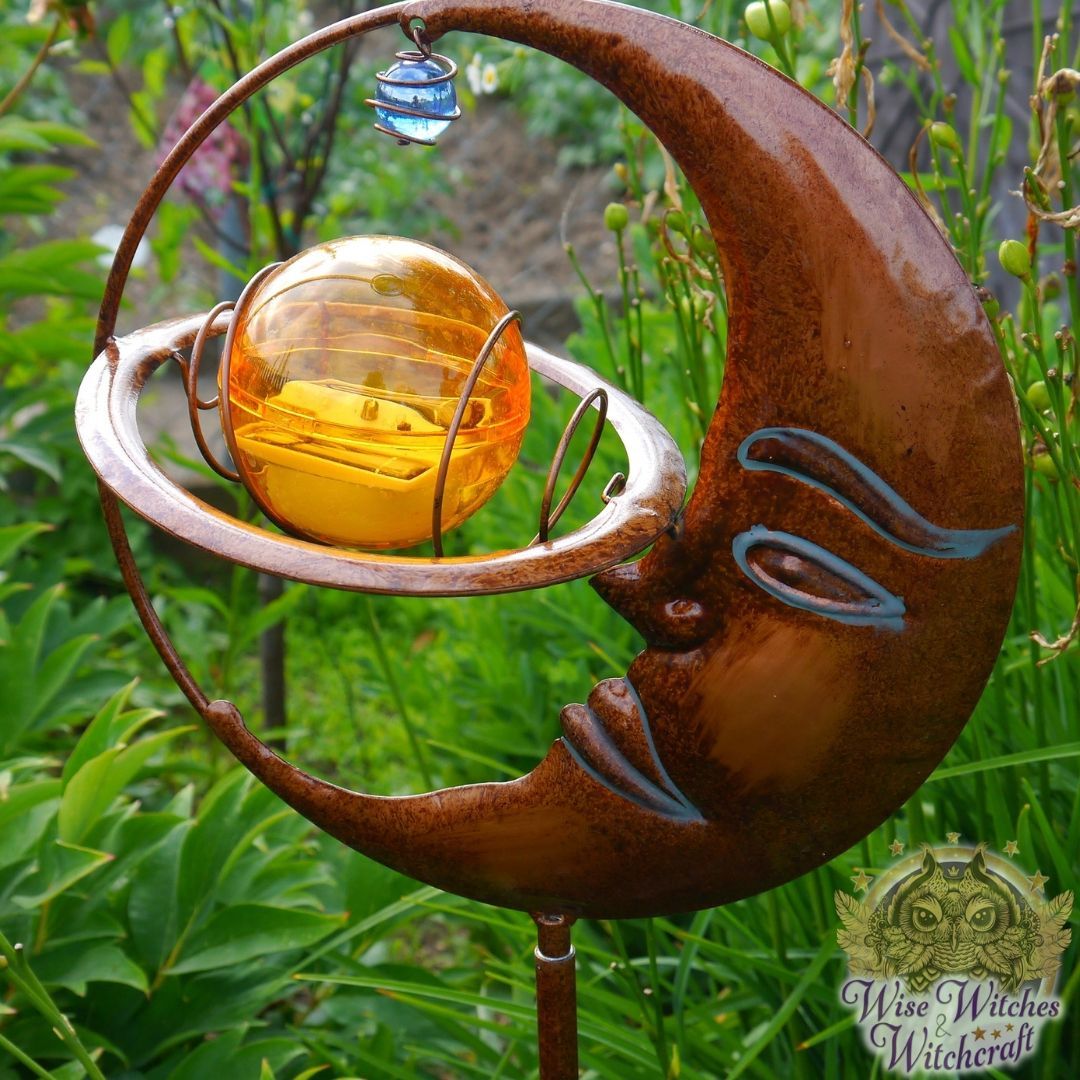
“To cultivate a garden is to walk with God.”
– Christian N. Bovee
Witches love their gardens, but those beautiful plots didn’t just spring up overnight. There was a lot of planning and hard work involved. As much as we enjoy wielding our magic wands, this is a time to think of the fundamentals. How can you make your magical garden fun, functional and flourishing?
Practical Considerations for Magical Gardening
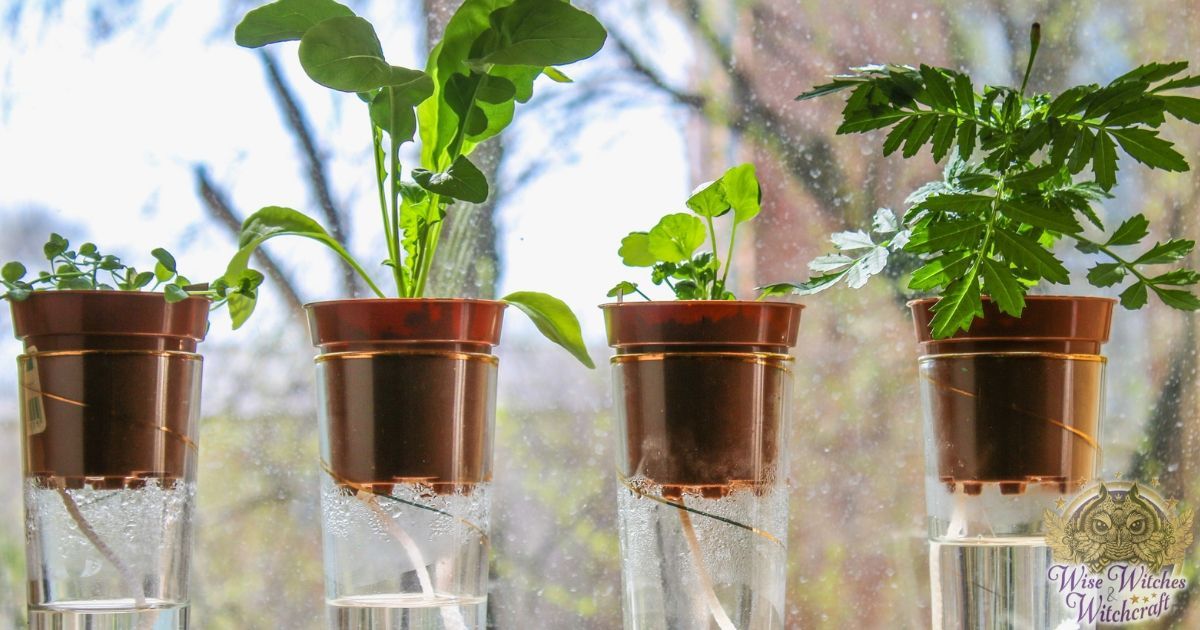
What kind of space do you have for a garden? Follow that answer with another question: How much time do I really have to take care of that space. You could have a huge plot for garden beds, but that reaps nothing if you don’t have time for watering and weed control. Here are some other important factors for magical and mundane gardens:
Pets and Children: Outdoor gardens open a whole new play space for children and pets. If you can find a way for limited access that’s probably the best solution. You can always give children a small area all their own. There’s nothing sadder than coming out one morning to see that Fido used your garden for burying bones.
Be Honest with Yourself: Let’s face it not everyone can be like Harry Dodson (The Victorian Kitchen), Bob Flowerdew (Gardner’s Question Time) or Alan Titchmarsh (BBC Gardners’ World Magazine). These lucky folks get to invest their “work” time into what is a passionate hobby. Not everyone can do that. It’s perfectly fine to think small and manageable. Seeing a sickly, untended garden is a truly sad thing.
[wisew_rectangle_large align=”left”]Dig It: What type of soil do you have? Plants can be very picky. Some love clay and hate sand. If you feel your soil is abysmal, consider getting replacement topsoil (symbolically a fresh, healthy start). You also find that some garden shops and cooperative extensions offer soil testing.
Let it Shine: Next, look at your available light. Indoor gardeners, what parts of your home get direct and indirect sunlight? What type of flower box or planter do you plan to create (and how much space is available for them)?
Outdoor gardeners: Look at your yard. What part of it gets the most sun? What part gets the least? Put your plants where they will be happiest with the amount of light they receive.
Drainage: Those who live at the top of a hill may find puddles at the bottom in spring. Now water is all well and good for our friend Tree Spirit – Willow. Meanwhile, that lovely Lavender wants it dry (please). Overwatering kills this plant fairly quickly.
Pay attention to the practical considerations of gardening. Otherwise, no amount of magick will make your flowers and plants flourish. Green witches make every effort to work within natural laws, following the Mother’s lead. Nature shows us where to sow things… just go look at a forest! Some plants tuck their roots neatly beneath lush, larger plants so they get shade. Others stand brazenly out in the sun. This is Mother Earth’s gardening blueprint, and if we follow that pattern conscientiously, we’ll rarely go wrong.
Tooling Around in a Magical Garden
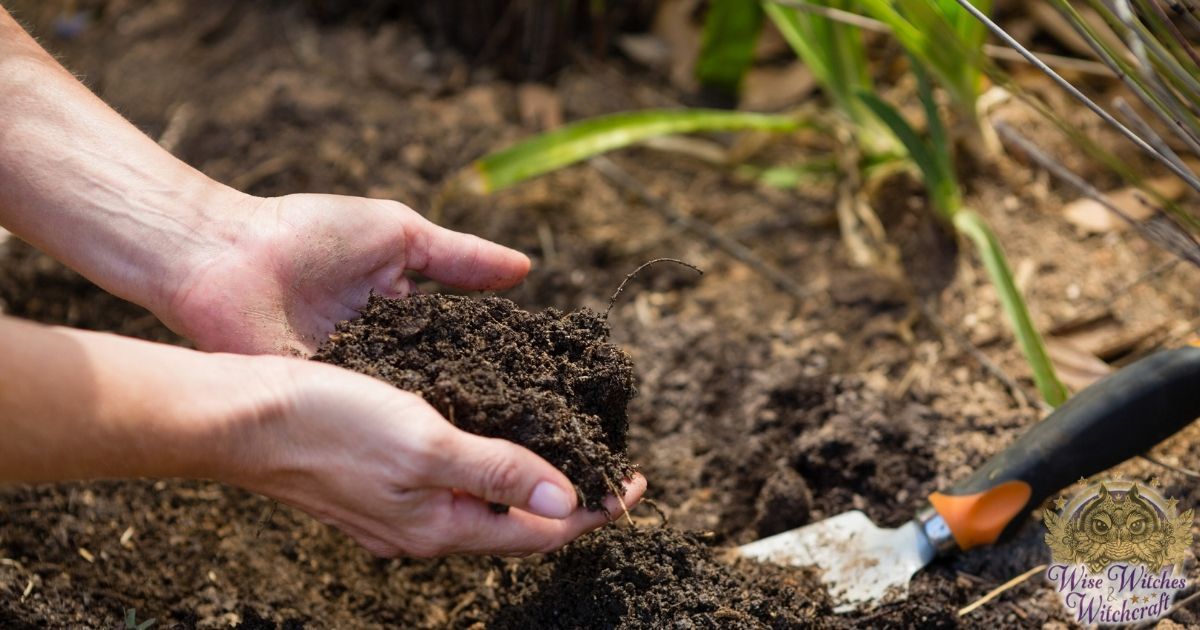
You might not immediately consider some of these examples as “tools,” but the idea here is getting creative with common gardening add-ons. Think of the soil beneath your feet like your altar. Everything you bring to that surface accents the sacred space you’re creating by remaining mindful.
HINT: cleanse your tools by moving the item through a purifying incense like sage or cedar, sprinkling them with spring water or lemon water, or other similar techniques. Charge them in sunlight (this energy is directly connected to plant growth) and say a prayer over them so that your personal God or Goddess will bless your efforts.
Decorative Items for a Magical Garden
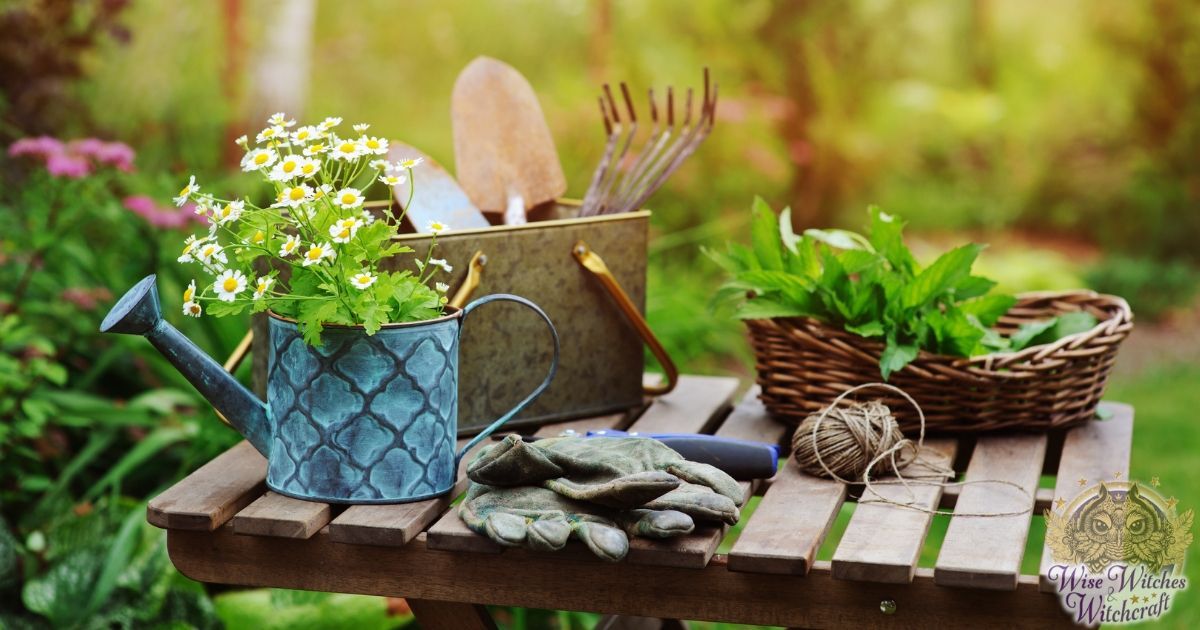
This generally applies to outdoor gardens, but creative indoor gardeners can use them, too. Nurseries carry a wide variety of decorative landscaping and gardening items, some of which are perfectly suited to magick (everything from Gods and Goddess statuary to fairy folk and butterfly wind chimes). Decorative items highlight the theme of your garden, accent visual beauty, direct earth energies, and evoke smiles from onlookers.
Fencing or Borders to Protect the Magic Garden
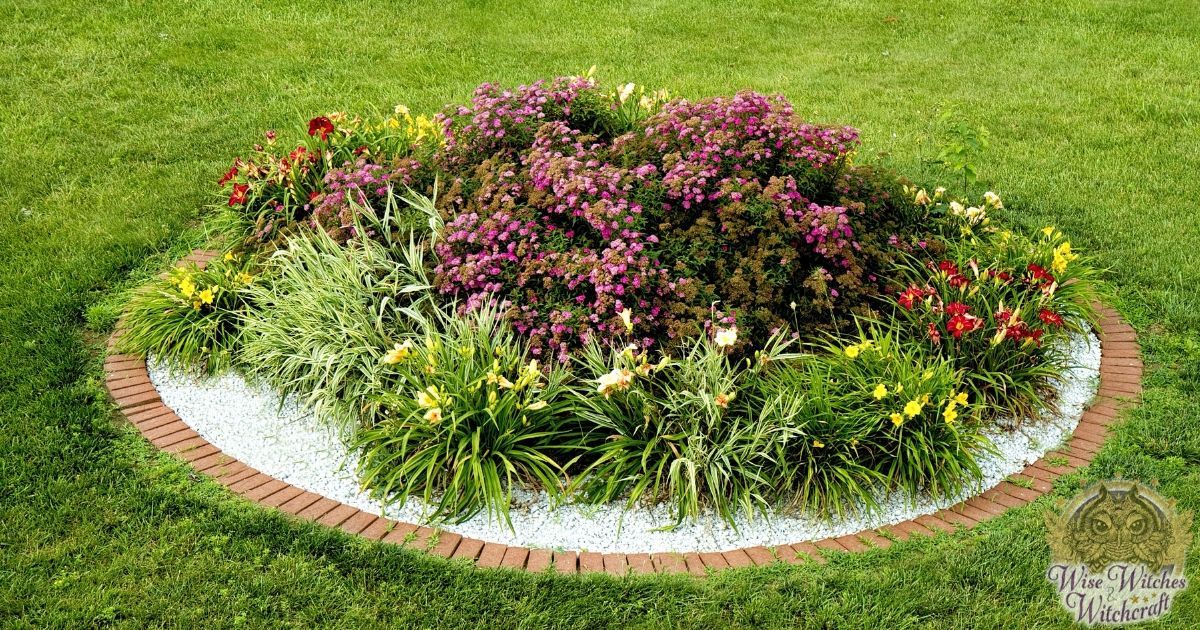
Fences and borders keep unwanted visitors out of your gardens. Some options include:
- Fist-sized, water-worn stones that make a very nice permanent border; These stones represent both the Earth and Water element nicely.
- Logs or thick branches cut from a fallen tree (these biodegrade after a while); You can use the magical symbolism of the tree itself for improved energy. Applewood brings happiness, cherry wood – luck, elder welcomes fairy folk, maple offers wisdom and balance, and willow is for wish fulfillment.
- Prefabricated wooden and plastic fences. Long lasting, easily installed.
- Stackable brick pieces or molded concrete blocks, representing stability.
Finally, there are some plants called “border plants” for creating a natural border around your garden. These are worth considering if you’re not worried about wandering bunnies. Examples of border plants include:
- Small evergreens for longevity.
- Deciduous shrubs.
- Begonias (harmonious communication),
- Garden mums (remembrance).
- Dwarf feverfew (protection).
- Bay (fire magic)
- Dill (blessings and love)..
- Savory (passion).
Fertilizers for a Healthy Garden
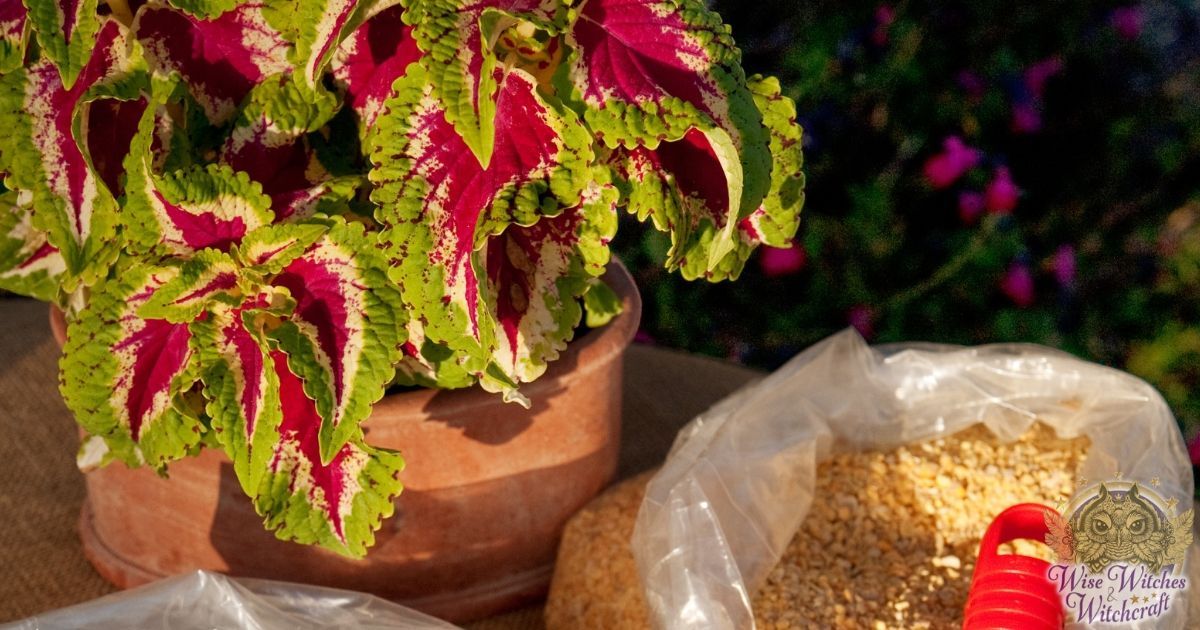
By definition, a fertilizer hastens growth, augment plant yield or size, and improve the overall soil condition. Note that fertilizer is not a synonym for plant food since plant food only nourishes the flora and does not improve the soil.
Thankfully there are a lot of natural fertilizers from which to choose, not the least of which is your own compost or a homemade mixture. For those who would prefer to buy a ready-made fertilizer, there are many available. The key to choosing fertilizers for your garden really comes down to reading labels. See what kinds of flowers and plants will benefit from a particular fertilizer, and if you’re not sure, ask! If the people selling the product don’t have an answer for you, it’s probably not a good place to shop for gardening supplies.
Hand Tools for Magical Gardening
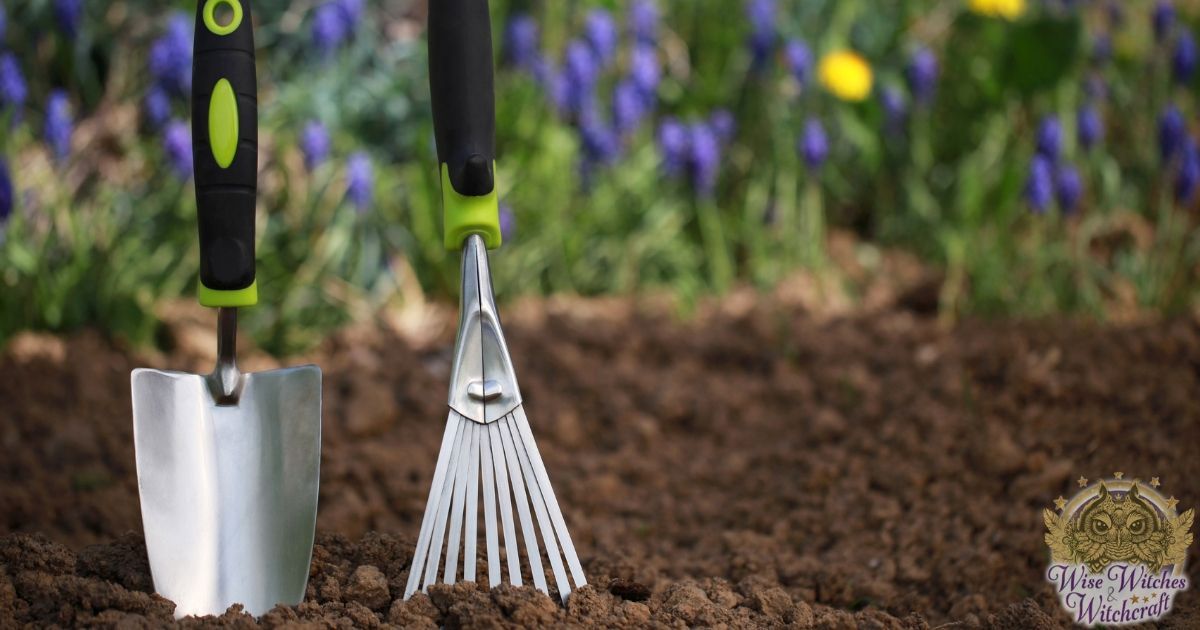
Hand tools probably bear the closest similarities to what we normally think of as magickal implements. The trowel might become a wand, your gardening scissors an athame, and so forth. Small rakes, hoes, and weed pullers are also good implements to have readily available.
Insect Repellents for a Healthy Garden
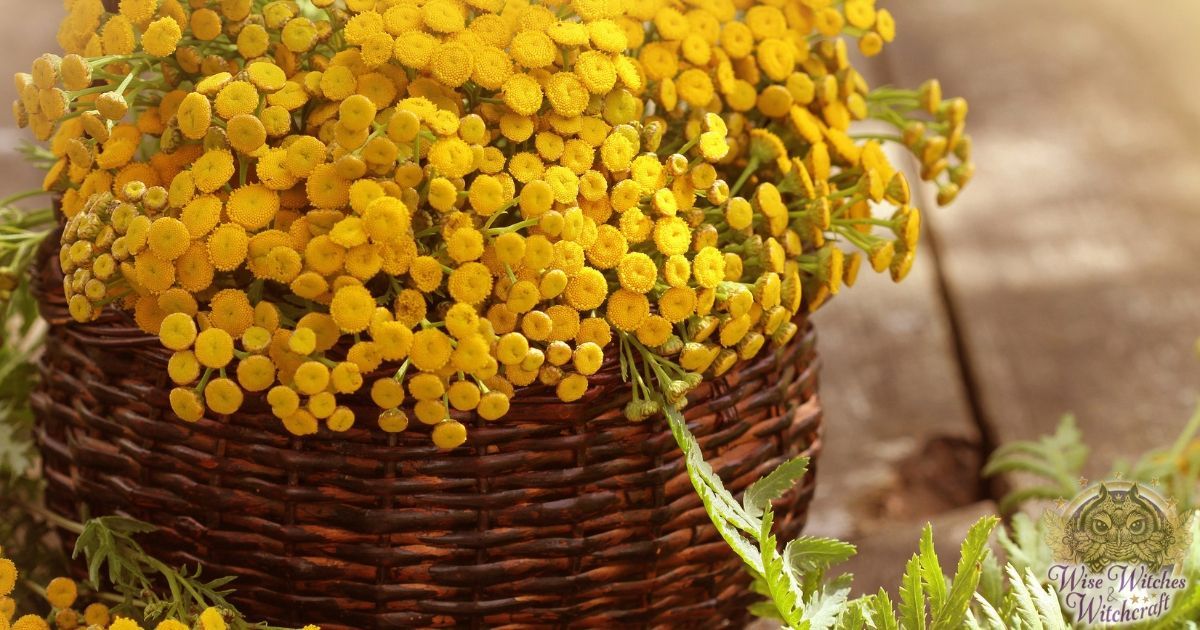
The Green Witch, Herb Witch, and Hedge Witch know that insects can be a tremendous boon to a garden by collecting and sharing various types of pollen and spores. Insects can also be a horrendous bane, eating up roots, leaves, flowers, vegetables, and so on, or blighting them with eggs. Commercial insecticides are horrible for plants you want to use for magick. So, what do you do?
One option is to learn companion planting techniques. Companion plants help each other grow and help deter pests. If you’re having trouble with:
-
Ants, for example, plant mint near cabbages and tomatoes. Other examples include:
Aphids: Plant chives around your carrots and roses, marigolds near the tomatoes or potatoes, and mustard near bean plants.
Japanese beetles: Plant tansy near the berry bushes.
Snails: Plant rosemary near the beans.
Whitefly: Plant thyme near eggplant, potatoes, and tomatoes.
Beyond companion planting, there is always the option of making homemade insect repellents. Perhaps the simplest is a tomato leaf tincture. (Steep tomato leaf in warm water. Repeat until heady with an aroma.) Most insects don’t like tomatoes, and grabbing a few leaves off these plants won’t hurt them. To boost the effect of the tincture, add other aromatic plant parts like chamomile, rosemary leaves, onion slices, and marigold petals. Apply after every rainstorm, using a spray applicator.
Markers for the Garden
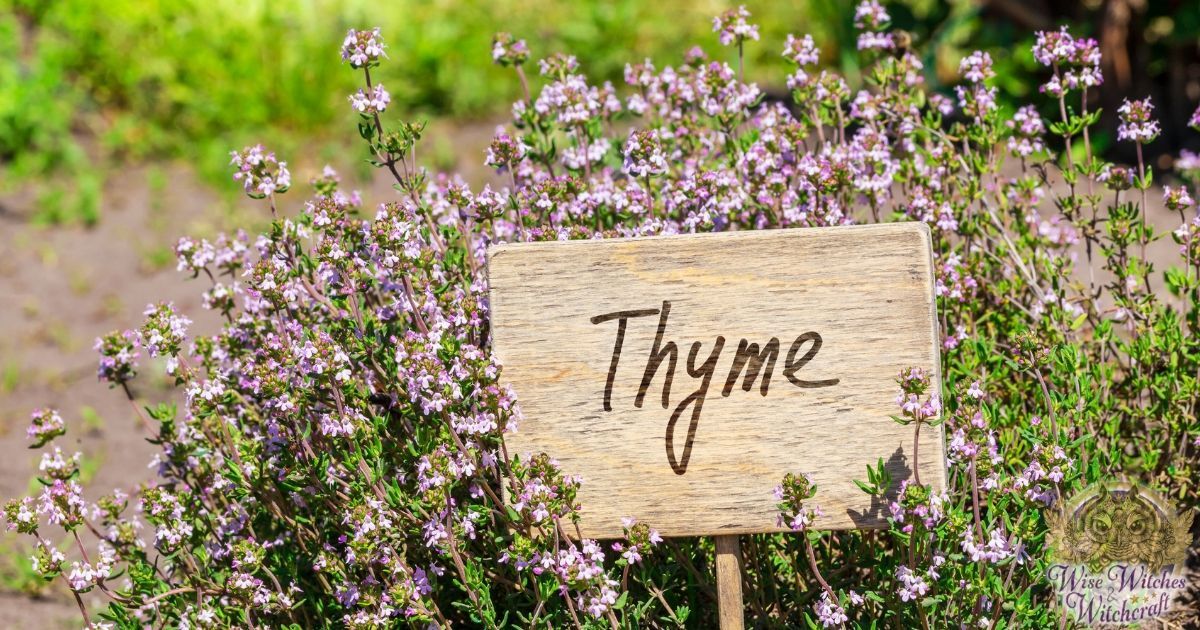
These are most helpful for those creating kitchen gardens, so you know where various herbs or vegetables have been placed. Even when things start growing, it’s often hard to tell sprouts apart, so push a stick through the seed package and put it in the soil at the back of a row. Some garden shops sell stoneware signs for herbs and flowers that are quite pretty, but rather expensive unless you plan on sowing that particular plant every year. Instead, for the budget-minded Witch, another alternative is writing the name of the flora on old popsicle sticks in waterproof marker. These will last for at least a season.
Gardening Support Trellises or Spikes
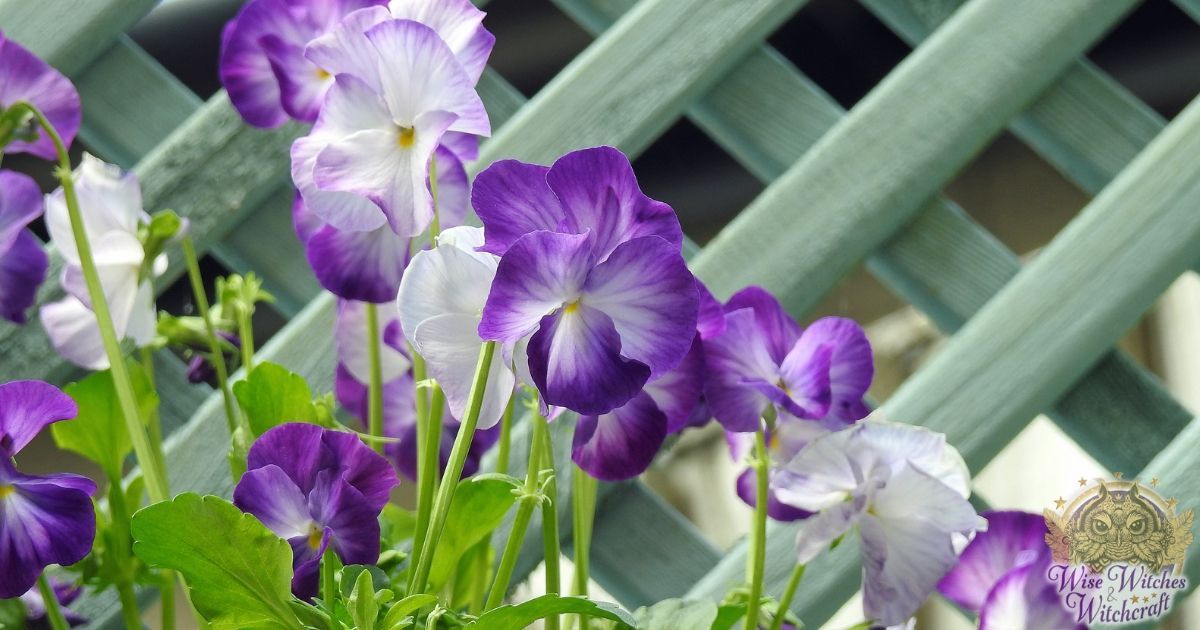
These are necessary for vining flowers like clematis, vegetables like cucumbers, peas, and beans, and heavy- topped plants like tomatoes. Clematis (for a sharp mind) makes a lovely addition to outdoor gardens because you can put it in as a backdrop, then pattern the ground around it in the front. Try fashioning your own trellis like a magickal rune or a pentagram so that the energy represented grows with your vining plants!
Weed Deterrents for Magical Gardening
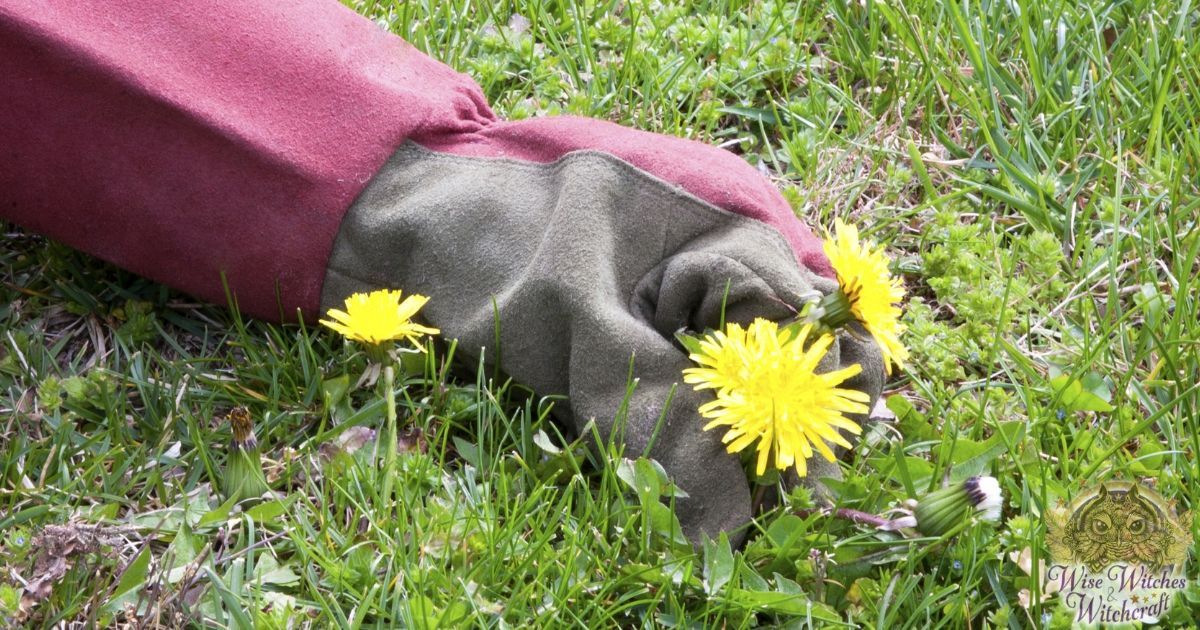
While there are such things as helpful or useful weeds, most gardeners consider them a pain. From a magickal perspective, pull weeds working through your garden’s surface counter-clockwise (for banishing). If you can do this during the waning or dark moon, all the better.
But, do you really want to spend time pulling out creeping plants, dandelions, and other unwanted guests in our gardens when you could be enjoying them instead?! Learn the wonders of landscaping fabric. Place small, anchored strips between rows of seeds or seedlings (this also neatly marks the rows). Large pieces go over any dirt readied for a decorative garden, with holes cut where you want the flora to go.
Finish the Magical Garden with Fillers
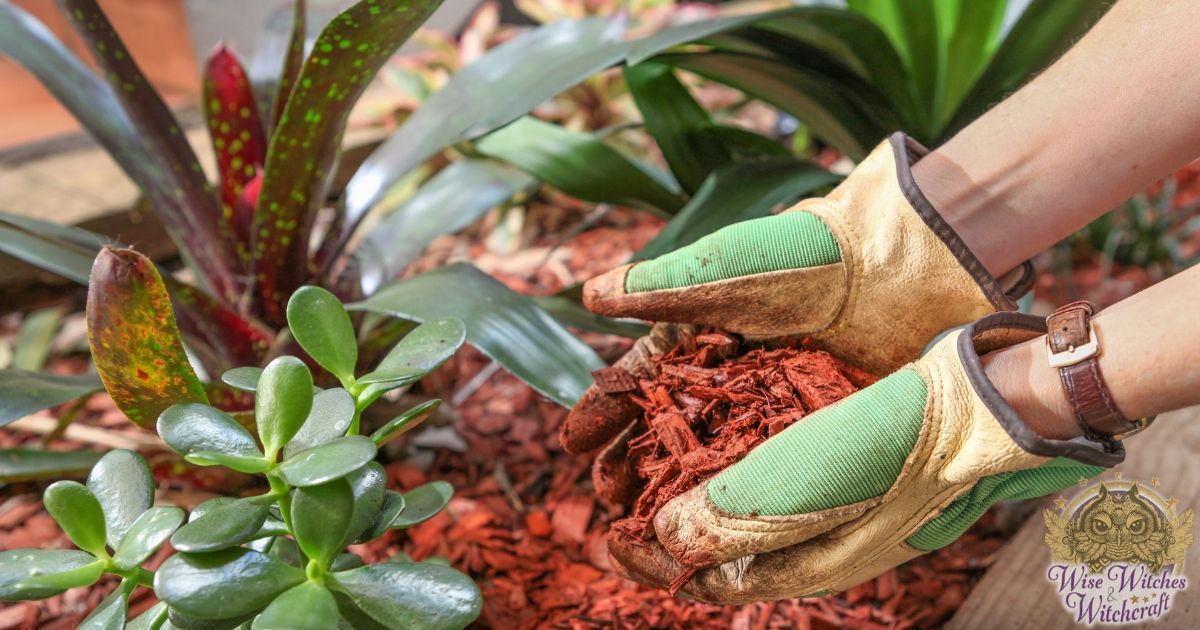
To finish everything off, we also need “fillers.” Most folks who use landscaping cloth wouldn’t want it to be visible. So, just sprinkle landscaping rock or mulch over the surface of the fabric to cover. Nurseries carry a variety of stones and bark (call ahead to be sure) that can also be used as filler. Choose a color that’s visually appealing or magickally significant.
Likewise, department stores, hardware stores, home, and garden suppliers, and so on, often have summer garden shops with a variety of mulches (cocoa shells are particularly pretty and have an amazing aroma). Do, however, shop around. Prices at these places vary dramatically. The same bag of mulch could cost as little as $3, where at another store the same item runs $8.
Being frugal doesn’t hurt your spells, charms, and rituals one bit!
Adapted from “Floral Grimoire,” by Patricia Telesco. All rights reserved.




